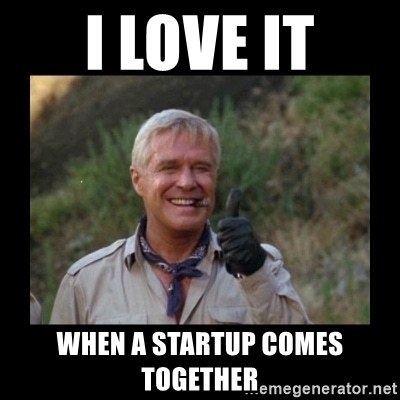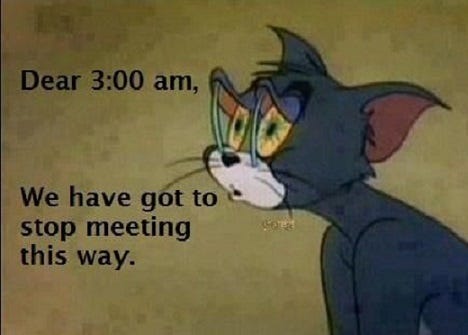Welcome to the MoneyNeverSleeps newsletter! Thanks to the 93 fans who signed up for the newsletter.
We are getting closer to the 100 subscribers so feel free to share with your friends!
If you’re reading this but haven’t subscribed, now’s the time to join!
Photo Credit: The Boston Globe

Strike one, got you by surprise
Strike two, right before your eyes
Pitch three, this one’s to the wall
Ain’t no game like the game of Hardball
- ‘Hardball’ by Lil’ Wayne
Last week on the MoneyNeverSleeps podcast with author and investigative journalist Peter Geoghegan we told the story of following the money of undisclosed donations in British politics and his book Democracy for Sale.
What the hell does this have to do with baseball?
With me taking the wheel on the newsletter for the first time this week - my partner in crime Eoin has been doing all of the writing so far - I’m going to bridge everything together in my own unique way. Everything in this world is related in one way or another if you think laterally…..
In prepping for the podcast, I discovered that Peter Geoghegan is somewhat of a cricket player, and I’ve always been fascinated (really? yes, really!) with the shared roots of baseball and cricket, so I asked him for his thoughts. Peter’s perspective went beyond that of bats and balls and into how both games appear to be team games, but are so heavily influenced by individual performance.
This got me thinking (laterally) about the session I did with R3 earlier that day on their webinar about pitching to investors, as in, yes, startups are a team game but a startup’s success is heavily dependent on the performance of individuals. Preparation, timing and luck all play a role, but the individual performances will make or break you. As a founder, you need to put the best combination of skills onto the field every day, but you also need to know when to step up to the plate yourself.
To succeed in a game like baseball, you have to be comfortable with failure. The best hitters fail 70% of the time. With pitching to investors, you need to be comfortable with failure as well. Brian Norton, who was our very first guest on MoneyNeverSleeps, pitched to over 150 investors before he funded Future Finance. Brian pointed out that what you get out of all of the ‘no’s’ will eventually lead to the big ‘yes’.
I got into the ‘getting to no’ approach during the R3 session, i.e., if you feel the ‘no’ coming while pitching to investors, you need to get as much as you can out of the rapport you just built up with them. At the very least, you want to get something valuable out of time you spent researching the investor’s business and prepping your pitch.
Anyway, I’ve taken all of my prep notes for the R3 session and turned them into a bit of a written narrative below. The audience for this session consisted mostly of those involved in blockchain / distributed ledger technology startups, but I’ve adapted the story to be accessible to a wider audience. Here’s part one as I talked for about 45 minutes and it’s a long narrative:
Your first meeting - the story behind the story
Starting from the way you got in touch with them, the VC is always evaluating, but the most important thing is to be yourself – anything less than a genuine representation of you and your business won’t get you too far.
Point of intro:
Do your homework first - depending on if you’re pre-seed / seed / post-seed / Series A – only target VCs investing in the round you’re in.
Target VCs that are investing in your space - the easiest ‘no’ for an investor is based on “we can write you a check, but we don’t know your sector so we won’t add any value after the check".
You’re always going to need an intro from someone the VC knows – it’s a tired old rule and prone to furthering the underrepresentation of non-white / non-male founders in startup ecosystems, but there is a sense of ‘de-risking’ for a VC when someone they know intros them to a founder. Also, it shows that the founder knows how to use their network, which is a great ‘tell’ for ability to sell.
If you’re brand new to startup ecosystems, the easiest way to get an intro is to get to know founders in your space that have raised a seed round from VCs – that’s your bread and butter network – but it’s not a quick turnaround. It’s just that you’re more likely to connect with an early stage founder than an early stage VC in the circles you travel online.
Once you get to know each other, you want that founder to think that they’re doing the VC a favour, not a favour to you, by introducing you to them.
As you move through the rounds, keep doing this, and hopefully the friends you’ve made that are one or two rounds ahead of you will stay friends!
Once you’ve got the VCs email, you’ve got to use it wisely, and write a personalised email – do NOT use an automated tool like MailChimp to reach investors (the first time, that is – there’s a follow up to the “no’s” you can do as an automated newsletter, but that’s another story for another day).
Look at the VC website, find companies that they’ve invested in that look like yours, and try to point out synergies.
Think about the craziest sales person you’ve ever worked with and how prepared they were on their target customers. You need to think the same way – don’t stalk them online or try to find out their dog’s name, but definitely look at their LinkedIn Profile and try to find something you have in common.
In short, you’re starting what will be a 10-year relationship, and you need to build rapport. How you build rapport with the VC will be a sign of how you build rapport with your team, your customers and other partners. If you’ve got a strong point of intro and a well-crafted deck, with a bit of luck, you’ll get that first meeting.
But, keep in mind that all that a good deck gets you is your first meeting.
Beyond the deck
As the meeting will be over Zoom, Teams, Google Meet, or whatever works best for you and the VC, everyone has no choice but to get comfortable with doing business this way with the pandemic. While video can be restrictive, it opens up a whole new world of opportunities, and also, pitfalls.
Look good and sound good
Even if your laptop has a 4K quality camera, you need to be heard. The mic on AirPods suck for sound quality, and you can get a basic Sennheiser headset pretty cheap these days. Pretend you’re recording for a podcast.
Take advantage of the medium – have cue cards plastered on your wall behind your laptop, but make sure you’re still looking into the camera.
Commandeer your (strong) internet connection, wherever you are. Friends and family hogging your wifi can deep-six the whole pitch.
On the day before, make sure the video platform works on your PC if it’s not your own account.
We’re all human
Small talk is still a thing at the beginning and the end of a Zoom, and again, if you’re succcessful, this is the start of a 10-year relationship, so don’t just jump right into the pitch. Again, how you build rapport with the VC will be a sign of how you build rapport with others.
Get them talking and use their name – most people like to hear their own voice and their own name, so make sure you don’t just give them the hairdryer. If you’re doing well, hearing themselves speak positively about your business can be subconsciously reinforcing.
Connect – don’t just hide behind a screen share – if you need to go off topic of the slide, turn off the screenshare. They’ll be able to see the conviction in what you’re saying.
Be clear – there’s nothing worse than listening to someone tell you their life story or unload piles of technical details onto you while you’re supposed to be hearing about their business.
Be flexible
There is no protocol – it would be great if you could do a gentle 30 minute intro call followed by a full pitch followed by a ‘meet the team’ call, but it doesn’t work that way. You’re not at the beck and call of the VC to jump from one thing to the next, but you want to demonstrate that you’re responsive, opportunistic and adaptable. Those are all ‘tells’ to how you’ll perform under pressure. So, what you thought might just be a casual virtual meet and greet is actually the only meeting you’ll get.
Share the stage
Only those with speaking parts should attend – in a physical meeting where it’s all eyes on the speaker, it’s easier to hide the quiet co-founder. On a video call, make sure everyone contributes, but make sure it’s not like the intro to the Brady Brunch - 2-3 should do. The VC is investing in not just you, but your co-founders as well.

Be a team
There’s a reason some poker players wear sunglasses – your eyes are a dead giveaway, and given that your eye movements are much more visible on screen, you’ve got to manage this one carefully.
In a physical meeting, it’s less likely that the VC will notice your co-founder rolling their eyes at something you say, or chomping at the bit to get a word in edgewise while your co-founder is talking. On Zoom, it’s all eyes on everyone. Again, this is a 5-10-year relationship, folks, not just between you and the VC, but between the co-founders as well, and team dynamics are critical.
As the old saying goes “I’d rather invest in an A team with a B product than a B team with an A product” – the key word in here is “team”, not “a small group of talented individuals who hate each other’s guts”.

Be ready to demo at the drop of a hat
In the comfort of your own home, you should be able to have a fully-functioning demo ready and if the founder can’t demo the product, always have the person that can demo ready to join the call within a minute.
Get the follow-ups
If you feel that the VC is interested, ask for the follow-up. If you get push back on setting a next meeting, don’t annoy them, but ask what’s next for them.
If they say “I’ll talk this through with my colleagues,” that may mean they’re not sure they want to go any further, so always ask if there’s anything else that you can send through to help.
At the very least send a thank you email with proposed dates for a next chat. Too quickly seems fake, but within the hour feels about right.
Leverage rapport
If they say the dreaded “let me know how can I be helpful” you know that may be the last time they’ll ever talk to you, but they don’t want to be perceived as a jerk. There’s actually a Twitter account dedicated to this, check it out.
Getting to No – If you feel a no coming, make sure you drop in the question before the end of the call with “are their any other investors in your network that you think I should talk to?” but be careful with this one, don’t confuse someone’s intensely quiet focus with a lack of interest. Also, sometimes the timing of the VCs fundraising works against you, but if they’re passionate about the space you’re in, they’ll be helpful.
Timing is everything - you never know the VC’s situation with the money behind the money, i.e. who are thier investors? They may be genuinely interested, but their own LP investor tap is a bit backed up. Also, your startup lifecycle stage might be too early for the VC, but they like your business and want to keep tabs on you. That doesn’t help you today, but with the average startup funding round taking 12-18 months, it will be worth it to keep them updated.
What does it all come back to?
You have to play the game, but if it feels like you’re playing a game, it’s not coming from a genuine and authentic place.
Watch this space for part two where I’ll get into ‘Articulating Your Story’.
Tell me why I’m wrong…
- Pete
Left Field
How do I describe ‘Left Field’? It’s a place to put the content (newsletters/articles, etc) that we have amassed over recent weeks or previous years that really make us think or change our thinking on a particular topic. All the content will offer an alternative view of some topic in financial services, technology or sport (or a combination of all three!)
Why The Sports Card Industry Has Not Yet Reached Its Peak
In honour of Pete’s favourite sport (and because I find this particular market strange but fascinating!), this week’s ‘Left Field’ is dedicated to the sports trading card industry.
As an area I have always assumed was just a hobby, it would occasionally make international headlines for the large sums made on the sale of certain cards, such as the sale of the 1909 T206 Honus Wagner card (the undisputed "Mona Lisa" of baseball cards, of which only 50 were made) which was sold in 2016 for $3.12m.
There have been several trends that have shaped sports card collecting over the last decade and with further advancements in technology, there will be further trends helping carry the industry into the future. Once labeled just a hobby this industry appears to be built to last.
Anyway, I won’t give away too much. Enjoy the article and feel free to get in touch to discuss more!
- Eoin
Can’t Sleep?

MoneyNeverSleeps podcast episode from this week:
Episode 99: Money Talks #21: Peter Geoghegan and Democracy for Sale.
This week, Eoin and Pete have the pleasure of talking to Peter Geoghegan about his book, ‘Democracy for Sale: Dark Money and Dirty Politics’. It is a fascinating story of how undisclosed donations have infiltrated British politics, undermining public faith in democracy and fuelling the rise of populism across the West. Pete and Peter also discuss their common love of baseball and cricket and Peter shares a fascinating story about emigration from Longford to Argentina!
Podcast Recommendation: Highy recommend checking out the ‘Fintech Insider’ podcast by the team at 11:FS. It is a bi-weekly podcast dedicated to all things fintech, banking, technology and financial services.
Book Recommendation: I have just finished reading ‘Start with Why’ from Simon Sinek. The author gives really ineresting insight and explains the framework needed for businesses to move past knowing what they do to how they do it, and then to ask the more important question-WHY
Article/Newsletter Recommendation: if you haven’t heard of it already, check out the ‘Pomp Letter’, a daily newsletter from Anthony Pompliano. It’s a daily newsletter for individuals who want to learn about Finance, Tech, Bitcoin, blockchain, crypto, and digital assets.
This newsletter has been written by Eoin Fitzgerald and Pete Townsend
Want more MoneyNeverSleeps?
Check out the MoneyNeverSleeps Podcast on Apple Podcasts, Spotify and all major podcast platforms.



